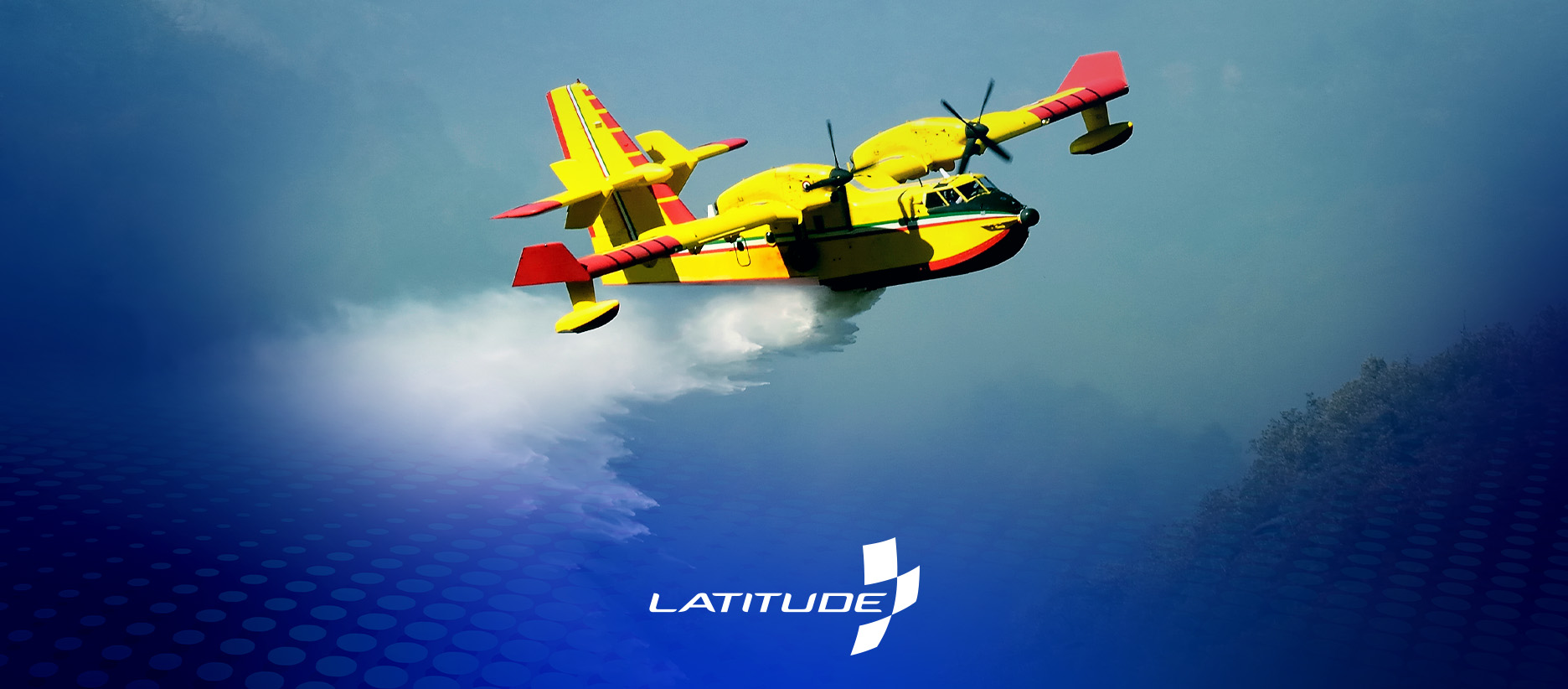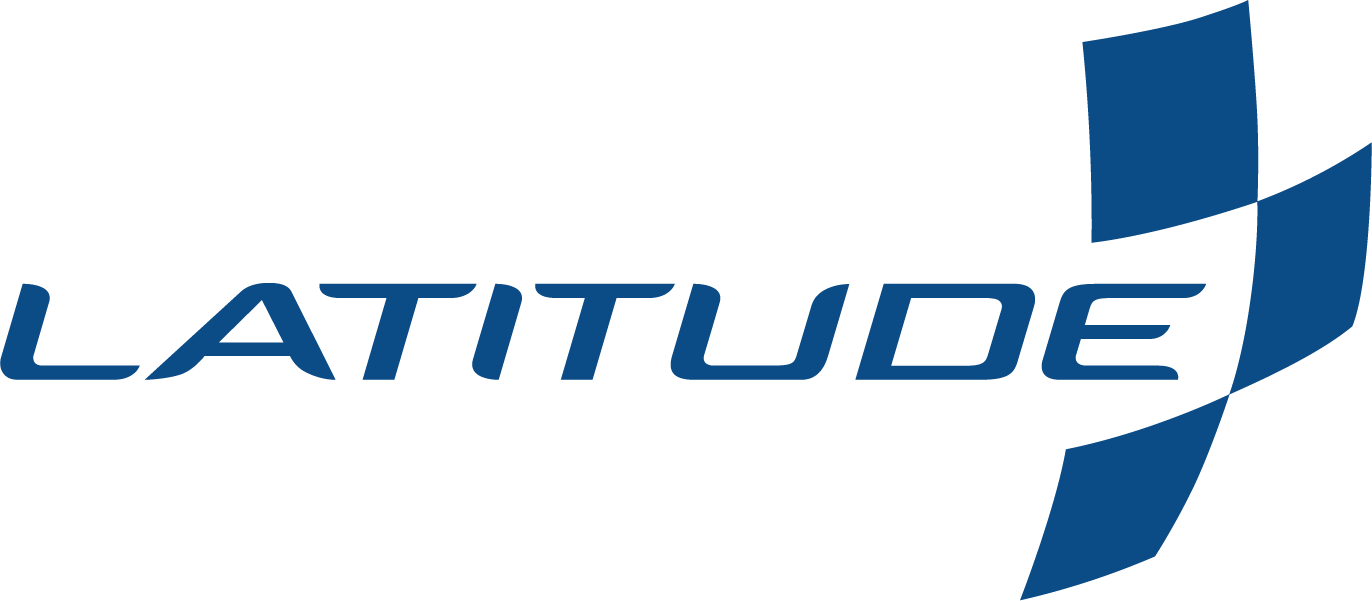Get Ahead of Aerial Firefighting Season by Preparing your Latitude Satcom Units

The upcoming aerial firefighting season is only a few short months away. As a proactive exercise, we would like to provide some useful reminders on getting Latitude Technologies’ (Latitude) products and services operational before the season gets under way.
The below information is designed to provide answers to the most frequently asked questions (FAQs) as operators prepare for fire season. As always, it is important to contact us early so we can provide adequate and timely support for your Latitude equipment and product configurations.
If you are not directly involved in working with Latitude products, please forward this information to pertinent members of your organization as it may assist them with their preparation.
Submitting Support Requests
We understand aerial firefighting missions are critical and time sensitive. Due to the number of requests that we receive during peak fire season, we recommend providing the following information in the format specified:
- ESN: <Your SkyNode/IONode Serial Number>
- Aircraft Affected: <Aircraft Tail/Call Sign>
- Issue: General description of the issue and respective troubleshooting attempts you have already conducted
Frequently Asked Questions
Q: My aircraft is no longer tracking.
Check and verify the indicator lights at the front of the SkyNode while the unit is powered up. A quick visual inspection of the LED blink pattern can help point you in the right direction.
Skynode S100 | ||
If the LEDs are blinking, investigate the cabling between the SkyNode and their configured locations. | ||
LED Blink Pattern | Status Details | Solution / Remarks |
SAT(L1) – LED Solid ON | Iridium Network Fix obtained | If this blinks often within a minute, this could be caused by signal loss. |
SAT(L1) – 1 second ON, 1 second OFF | No Iridium Network or SAT is Not Registered | Check Antenna Connections. Remove and Re-secure.
|
SAT(L1) – 2 seconds ON, 2 seconds OFF | Pass-Thru mode Enabled (Unused) | N/A – Most clients do not use this feature |
SYS(L2) – LED Solid ON | System Operating Normally | — |
SYS(L2) – Blinks Rapidly (200ms ON, 200ms OFF) | Emergency Switch Triggered (Enabled) | Contact support to assist with troubleshooting and making configuration changes as necessary. If not working, email clientservices@latitudetech.com. |
SYS(L2) – 1 second ON, 1 second OFF | System Error | Contact support to assist with troubleshooting and making configuration changes as necessary. If not working, email clientservices@latitudetech.com to begin an RMA case for repair. |
GPS(L3) – LED Solid ON | GPS Fix Obtained | It is normal for this to blink every now and again, re-establishing connections with the GPS Satellite constellation. |
GPS(L3) – 1 second ON, 1 second OFF | No GPS Satellite Fix | Check antenna connections. Remove and re–secure. If not working, email clientservices@latitudetech.com. |
Skynode S200 | ||
If the S200s single LED is blinking and not solid, investigate first the cabling between the Skynode and their configured location. | ||
LED Blink Pattern | Status Details | Solution / Remarks |
LED Solid ON | System operating normally | — |
LED Flashing ON | System is Initializing | If this does not go completely solid, email clientservices@latitudetech.com to begin an RMA case for repair. |
1 Blink Every 3 Seconds | No GPS Satellite Fix | Check antenna connections. Remove and re-secure. If not working, email clientservices@latitudetech.com |
2 Blinks Every 3 Seconds | No Iridium Network Fix | Check antenna connections. Remove and re-secure. If not working, email clientservices@latitudetech.com |
1 Blink in 3 Seconds, Then 2 Blinks in 3 Seconds | No Iridium Network and No GPS Fix | Check Antenna Connections. Remove and re-secure. If not working, email clientservices@latitudetech.com |
On For 1 Second Every 2 Seconds | Pass-Thru mode Enabled (Unused) | N/A – Most clients do not use this feature. |
Note: If you are unable to determine a cause by inspecting the antenna connections (removing and replacing), confirm with Client Services via email that the unit is “Active” for SBD (Short Burst Data) data on the Iridium Satellite Network.
Q: I have uploaded by IONode files but do not see them in LFDA. Why?
IONode raw data files require being processed with the template assigned to read the values recorded to be viewed in LFDA. Depending on the backlogs of the LFDA processing server, this could take anywhere from 5 minutes to 2 hours depending on the length of recordings submitted.
If the data recorded was recorded without valid GPS data, the data is often considered invalid and can cause the flight data to not be available in LFDA. If you wish to verify if we have received the files and want to confirm they are still being processed or have valid GPS data, please email clientservices@latitudetech.com.
IONode | ||
If the IONode’s GPS(L2) LED is blinking and not solid, investigate first the cabling between the Skynode and IONode serial ports. If the IONode is setup for an RF Antenna, investigate the wiring of the antenna and IONode. | ||
LED Blink Pattern | Status Details | Solution |
Wi-Fi(L1) – Solid LED | Wi-Fi operating normally | — |
Wi-Fi(L1) – Blinking LED | Wi-Fi connection is initializing | If after 30 seconds, this does not go completely solid, check the wireless access point is powered on and the antenna is connected. Verify you have the latest configuration provided by Latitude Client Services installed on the IONode. If still unsuccessful, email clientservices@latitudetech.com. |
Wi-Fi(L1) – No LED | Wi-Fi disabled. | If a toggle switch is wired, check wiring and you have uploaded the most recent configuration to the IONode. If not working email clientservices@latitudetech.com. |
GPS(L2) – Solid LED | Valid GPS fix | — |
GPS(L2) – LED | Acquiring GPS satellite fix | Check Antenna Connections. Remove and resecure. If not working, email clientservices@latitudetech.com. |
SYS(L3) – Solid LED | No GPS satellite fix | N/A – Most clients do not use this feature. |
SYS(L3) – Blinking LED | Initialization issue, system error. | The IONode will require an RMA task to physically assess the issue. To begin the process, email clientservices@latitudetech.com. |
Q: I need to swap SkyNodes between aircraft. What do I need to let Client Services know?
Client Services needs to be notified by email (clientservices@skytrac.ca) when a SkyNode swap has happened.
The critical information that needs to be relayed is the unit’s model number, serial number, the registration of the aircraft the unit is coming out of and the registration of the aircraft the unit is going into.
There are often email alerts set up on the SkyNode.
Note: It is important to make sure that the config used for a swapped IONode and SkyNode is the same as the previous device’s configuration (configs). Usually for IONodes, most of the configs looks the same but there are very slight changes in terms of ARINC label masking, battery up time, logging rate, etc., which might not be visible. It is always recommended to use the exact same config as the damaged/non-functional device.
Q: I need to swap IONodes between aircraft. What do I need to let Client Services know?
Client Services needs to be notified by email (clientservices@skytrac.ca) when an IONode swap has happened.
The critical information that needs to be relayed is the unit’s model number, serial number, the registration of the aircraft the unit is coming out of and the registration of the aircraft the unit is going into.
Each IONode has a specific code attached to its configuration and is aircraft–type specific.
Q: I see different fill and drop values in LFDA as compared to ATIS. How do I know which ones are correct, and why is it different?
ATIS – The data in ATIS is from near real-time messages sent over-the-air (via SBD) from the Skynode. On most installs these messages are triggered by FSMs on the IONode and sent out via the attached Skynode. There are also stand-alone S100 installs that can generate these messages so there may not always be an IONode involved. These values are then processed on our servers by the ATIS system to be made available in forestry data feeds (AFF XML or JSON, “ATU data feeds”) and for viewing in the ATIS web application.
LFDA – The data shown in LFDA is based on high granularity FDM data recorded by an IONode and uploaded (usually via Wi-Fi / IONode BaseStation) post flight. This data then has transformations applied to it to have appear in desired formats in LFDA (defined in the FDM Template). In some cases, this data is also sent to USFS but that is for the OLMS program which should not be confused with the ATU program.
For ATIS data:
- Data is recorded and observed on the IONode while in operation.
- If an ATIS-specified configuration value has been reached (or met), The IONode then sends a signal for the Skynode to trigger a message to the ATIS system, sent over the air as encoded in 12-bit values (representing a 28V range for analogs) or as a bit flag for digital values. Note: these are raw data forms and require ATIS to be properly configured for the medium type being used.
- Received by the servers near real-time via SBD and converted based on the attached ATIS profile.
- There can be significant loss of fidelity if large volume ranges are squashed into a small voltage ranges. For instance if 5V maps to 7000L then you have: 7000((5/28)*4096) = 9.6L resolution between the possible ADC counts.
For LFDA FDM data:
- Data is recorded to the IONode in raw data format.
- LFDA requires for a manual upload of the data from the IONode using the BaseStation R2 software or a valid WI-FI connection to the IONode and Data Direct enabled in its configuration to transmit the files to the Latitude Servers
- IONode Templates are applied to the data on the servers to convert the raw voltages into readable units.
So due to the above considerations there may be a noticeable difference between the information provided by the two systems. There are also considerations regarding timing considerations and how noisy a data line may be as the IONode is recording at 1hz on analog which might not lineup exactly with when the associated data value captured by an FSM for transmitting over the air, therefor we may need to adjust both LFDA and the IONodes configurations as necessary.
 WebSentinel
WebSentinel